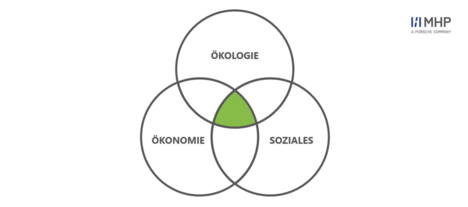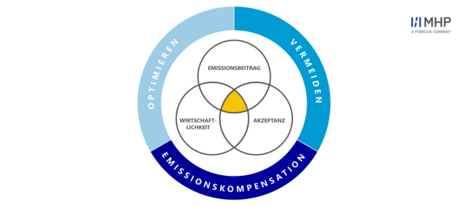
- Blog
- Published on: 01.06.2022
- 3:24 mins
Employee Mobility in the Future
Effective Measures for Reaching Net Zero
A company’s approach to climate action has become a differentiating factor.
This even applies when it comes to choosing an employer, as demonstrated by recent studies conducted by the recruitment experts at Königsteiner: Over 60 per cent of the survey respondents who applied for jobs in 2020 rated an employer’s attitude to climate action as important or very important. More than two-thirds also believed that a company’s awareness of environmental issues will become even more crucial for choosing an employer in the future.
Employee mobility is an area where there is great potential for companies to instigate decisive change. After all, the International Energy Agency reports that the transport sector still accounts for around a quarter of global CO2-equivalent emissions. Companies that define and implement appropriate measures in this area can make an effective contribution to a more sustainable world.
At MHP, we view sustainability as a combination of three dimensions: environment, economy and society. Effective measures that enable sustainable employee mobility must therefore contribute to all three dimensions.
The key question is how should companies identify effective measures regarding employee mobility? Any plans need to make optimal use of limited resources, reduce CO2-equivalent emissions as far possible, as well as take into account employee acceptance for the chosen measure. Let’s look at some specific examples that illustrate these challenges.
Adding plug-in hybrid models to a company car fleet has the potential to lower emissions and is therefore a decision motivated by climate action and environmental protection.
Yet the actual environmental benefit of this measure is often very low, the reason being that users rarely charge these vehicles electrically – the charging cables tend to remain in their packaging. However, this decision does increase employee satisfaction because the option to use a hybrid vehicle has tax benefits. This measure may be motivated by environmental awareness and is well-accepted by employees, but the contribution it makes to reducing emissions is often minimal.
By contrast, eliminating the requirement to be present at an office or even transforming a company to a fully remote model can significantly reduce mobility requirements and thus emissions. However, a fundamental change of this nature is often incompatible with the corporate culture and is not acceptable to employers and employees. In this example, the measure offers greater environmental advantages but at the expense of acceptance within the company. In many cases, it is difficult for companies to assess which measures are the most sustainable for the company overall and which should actually be implemented.
These examples demonstrate that there can be conflict between the three dimensions. With this in mind, MHP has developed a model that considers the use value of all three sustainability dimensions and makes this value measurable in terms of emissions contribution, cost-effectiveness and social acceptance.
The objective of the model is to help companies identify actions that prioritize all three dimensions equally and therefore represent a happy medium for sustainable employee mobility.
The first step is to analyze and evaluate potential measures with regard to their impact on reducing emissions.
In addition to the volume of emission savings in general, this analysis also considers the planned type of saving: eliminate, reduce or compensate for CO2-equivalent emissions. Next, we analyze the cost-effectiveness of a measure. The potential investment costs as well as follow-up costs are important here. The impact of the measure on acceptance among internal and external stakeholders is the final step. The impact on all dimensions together demonstrates how effective the measure will be in the long term for a company’s employee mobility considerations. A company’s values and priorities are what influence the final outcome. We therefore do not compile a general summary of the best actions – these must be tailored specifically to a company.
The window of opportunity in which appropriate measures will help to secure a sustainable future is closing. The Intergovernmental Panel on Climate Change shared this conclusion in its most recent detailed report. For this reason, rapid action and effective, sustainable measures will be crucial to how successfully we curb climate change. Some companies are already leading the way and have shared their commitment to becoming net zero, although the path to achieving this is often still unclear.
Let’s work together to find the right measures for making sustainable changes to employee mobility at your company – for a better tomorrow!
Want more interesting insights? Why not take a look our recent MHPDeepDive titled “Your Mission: Green Corporate Mobility”. In this session, we show how to identify and evaluate meaningful measures that prioritize environmental protection in relation to employee mobility. Various parameters and the associated circumstances are relevant to this discussion. We explore the exact process in our MHPDeepDive.



